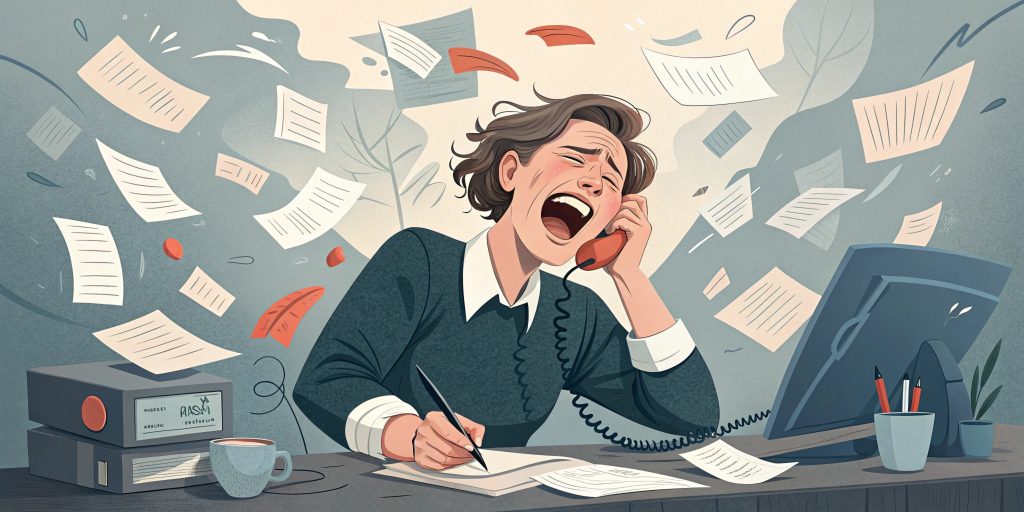Nervous laughter is a common yet puzzling response that affects people worldwide. While laughter typically signals joy or amusement, this peculiar reaction often emerges during stress, anxiety, or discomfort. Scientists and psychologists have long studied this intriguing phenomenon to understand its underlying mechanisms and evolutionary purpose.
The connection between nervousness and laughter reveals fascinating insights into human psychology and social behavior. This involuntary response is a natural coping mechanism, helping individuals manage uncomfortable situations and regulate emotions. From awkward social encounters to high-pressure moments, people often laugh when their nervous system kicks into overdrive.
Understanding Nervous Laughter as a Psychological Response
Nervous laughter is an automatic psychological defense mechanism that helps individuals cope with stressful or uncomfortable situations. Research indicates that this response operates independently of genuine humor processing in the brain.
The Science Behind Nervous Laughter
Neuroscientist V.S. Ramachandran’s research demonstrates how nervous laughter acts as a cognitive reframing tool in the brain. Studies show that approximately 80% of human laughter stems from non-humorous social interactions rather than jokes. This involuntary response involves:
- Neural pathway activation between the amygdala and hypothalamus
- Release of endorphins to reduce stress hormones
- Automatic engagement of facial muscles
- Rapid heart rate fluctuations
How Stress Triggers Inappropriate Laughter

The stress response activates specific physiological mechanisms that can result in unexpected laughter. Familiar stress-induced laughter triggers include:
- Sudden environmental threats or dangers
- Social embarrassment or awkward situations
- Confrontational interactions
- High-pressure professional scenarios
- Grief or emotional distress
- Reduce perceived threat levels
- Navigate social discomfort
- Regulate emotional intensity
- Signal non-aggressive intentions to others
- Process overwhelming situations
| Stress Response Component | Percentage of Cases |
|---|---|
| Social Interaction Laughter | 80% |
| Humor-Related Laughter | 20% |
The Evolutionary Purpose of Nervous Laughter
Nervous laughter evolved from primate social behavior as a survival mechanism that promotes group cohesion and reduces social tension. This behavioral response traces back to the Relaxed Open-Mouth (ROM) display observed in primates, serving as a submissive gesture and invitation for social interaction.
Social Bonding and Tension Relief
Nervous laughter activates the brain’s endorphin system, creating a natural stress-relief response in social situations. The release of endorphins strengthens social bonds between individuals by:
- Reducing anxiety levels during uncomfortable encounters
- Creating shared emotional experiences in groups
- Promoting positive social interactions
- Establishing rapport between unfamiliar individuals
- Defusing tense social situations through non-verbal communication
Fight or Flight Response Connection
The nervous laughter mechanism connects directly to the primitive fight-or-flight response system, offering an alternative to aggressive or defensive reactions. This response manifests through:
- Activation of the sympathetic nervous system
- Release of stress hormones like cortisol
- Increased heart rate and respiratory changes
- Muscle tension in facial and vocal areas
- Automatic engagement of social signaling behaviors
These physiological responses work together to create a socially acceptable alternative to confrontation, allowing individuals to navigate potentially threatening situations while maintaining group harmony.
Common Situations That Trigger Nervous Laughter

Nervous laughter emerges in specific high-stress situations where individuals experience heightened anxiety or discomfort. These scenarios activate the body’s stress response system, prompting involuntary laughter as a coping mechanism.
Public Speaking and Performance Anxiety
Speaking in front of audiences triggers nervous laughter in 75% of presenters during their first five minutes on stage. Common manifestations include:
- Breaking into giggles while delivering important presentations
- Laughing during serious business pitches
- Chuckling between sentences when addressing large groups
- Responding with laughter to audience questions
- Releasing short bursts of laughter during performance evaluations
Uncomfortable Social Interactions
Social situations create emotional pressure points that prompt nervous laughter as a defense response. These interactions include:
- Meeting new people at networking events
- Receiving unexpected compliments
- Encountering awkward silences in conversations
- Facing confrontational discussions
- Experiencing cultural misunderstandings
- Navigating professional disagreements
- Responding to inappropriate comments
- Managing unexpected physical contact
- Dealing with social faux pas moments
- Handling rejection or criticism
Each scenario activates the fight-or-flight response described by V.S. Ramachandran, triggering nervous laughter as an emotional regulation mechanism. This response helps individuals process social tension while maintaining group dynamics.
The Physical and Emotional Benefits of Nervous Laughter
Nervous laughter produces measurable physiological changes in the body, triggering chemical responses that influence physical and emotional well-being.
Stress Hormone Reduction
Nervous laughter activates the parasympathetic nervous system, initiating hormonal changes that reduce stress levels. This activation leads to:
- A decrease in cortisol production by up to 15% within minutes of laughter onset
- Reduced muscle tension throughout the body
- Lowered blood pressure metrics
- Improved immune system response through increased antibody production
- Enhanced oxygen flow to vital organs
- Endorphins: Natural painkillers that create feelings of pleasure
- Dopamine: Increases feelings of reward and motivation
- Serotonin: Regulates mood and promotes emotional stability
- Beta-endorphins: Reduce physical discomfort and anxiety
- Oxytocin: Promotes social bonding and trust
| Neurochemical | Primary Function | Release Time |
|---|---|---|
| Endorphins | Pain reduction | 30 seconds |
| Dopamine | Reward response | 15 seconds |
| Serotonin | Mood regulation | 45 seconds |
| Oxytocin | Social bonding | 60 seconds |
Managing and Controlling Nervous Laughter

Recognition and Self-Awareness
Controlling nervous laughter starts with recognizing physiological signals. Physical indicators before laughing episodes occur include rapid breathing, increased heart rate, tightening throat muscles, and facial tension. Monitoring these bodily responses creates opportunities to implement control strategies before nervous laughter emerges.
Breathing Techniques
Deep breathing exercises regulate the nervous system’s response to stress triggers. The 4-7-8 breathing technique involves:
- Inhaling through the nose for four counts
- Holding the breath for seven counts
- Exhaling through the mouth for eight counts
- Repeating 3-4 cycles at the first sign of nervous tension
Physical Redirection
Converting nervous energy into controlled physical actions helps prevent inappropriate laughter:
- Pressing feet firmly into the ground
- Squeezing hands together beneath a table
- Engaging core muscles
- Taking small sips of water
Mental Refocusing
Cognitive strategies redirect attention away from anxiety-producing stimuli:
- Focusing on specific objects in the environment
- Counting backward from 100 by 7s
- Silently reciting memorized text
- Creating mental lists of categorical items
Professional Support
Professional interventions provide structured approaches for managing nervous laughter:
- Cognitive behavioral therapy addresses underlying anxiety triggers
- Mindfulness training develops present-moment awareness
- Stress management coaching builds situation-specific coping skills
- Exposure therapy reduces sensitivity to anxiety-producing situations
These management techniques work most effectively when practiced regularly in low-stress situations before being applied in challenging environments. Each strategy targets different aspects of the nervous laughter response, allowing individuals to select methods that align with their specific triggers and circumstances.
Conclusion
Nervous laughter is a fascinating biological response that bridges our primitive past with modern social interactions. It’s a complex mechanism that serves multiple purposes, from stress relief to social bonding, while providing both psychological and physiological benefits.
Understanding why people laugh when nervous helps normalize this typical response and opens doors to better management strategies. Through awareness and proper techniques, anyone can learn to harness this natural reaction and transform it from a potential source of embarrassment into a tool for emotional regulation.
Remember that nervous laughter isn’t a sign of weakness – it’s a deeply ingrained survival mechanism that’s helped humans navigate social situations for generations. By embracing this understanding, we can approach our instances of nervous laughter with greater self-compassion and control.



